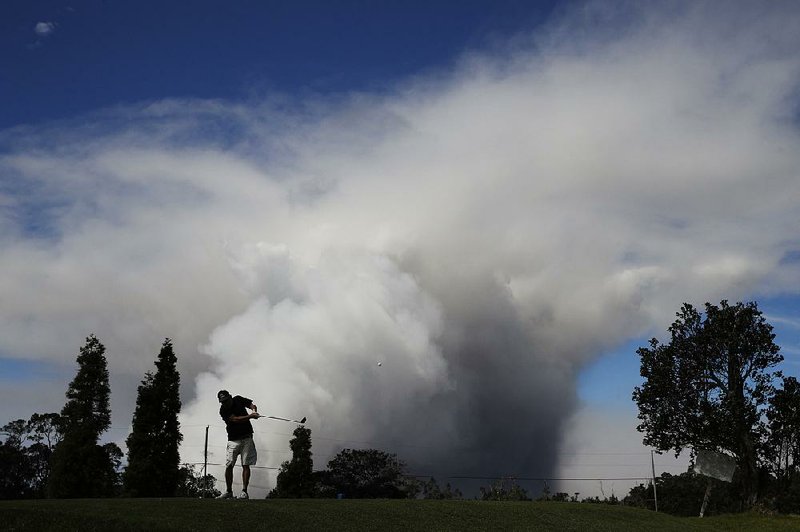PAHOA, Hawaii -- White plumes of acid and extremely fine shards of glass billowed into the sky over Hawaii as molten rock from Kilauea volcano poured into the ocean, creating yet another hazard from an eruption that began more than two weeks ago: A toxic steam cloud.
Authorities on Sunday warned the public to stay away from the cloud formed by the chemical reaction when lava touched seawater.
Farther upslope, lava continued gushing out of large cracks in the ground in residential neighborhoods in a rural part of the Big Island. The rate of sulfur dioxide gas shooting from the ground fissures tripled, leading Hawaii County to repeat warnings about air quality. At the volcano's summit, two explosive eruptions unleashed clouds of ash. Winds carried much of it toward the southwest.
Scientists said the steam clouds at the spots where lava entered the ocean were laced with hydrochloric acid and fine glass particles that can irritate skin and eyes and cause breathing problems.
The lava haze called "laze" from the plume spread as far as 15 miles west of where the lava met the ocean on the Big Island's southern coast. It was just offshore and running parallel to the coast, said U.S. Geological Survey scientist Wendy Stovall.
Scientists said the acid in the plume was about as corrosive as diluted battery acid. The glass was in the form of fine glass shards. Getting hit by it might feel like being sprinkled with glitter.
"If you're feeling stinging on your skin, go inside," Stovall said. Authorities warned that the plume could shift direction if the winds changed.
The Coast Guard said it was enforcing a safety zone extending 984 feet around the ocean entry point.
Coast Guard Lt. Cmdr. John Bannon said in a statement Sunday that "getting too close to the lava can result in serious injury or death."
Gov. David Ige told reporters in Hilo that the state was monitoring the volcano and keeping people safe.
Ige said he was thankful that the current lava flows did not pose a threat to homes and hoped it would stay that way.
Information for this article was contributed by Jae C. Hong and Marco Garcia of The Associated Press.
A Section on 05/22/2018
